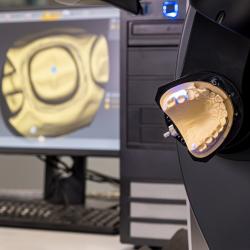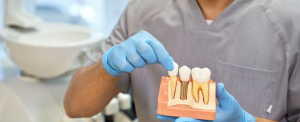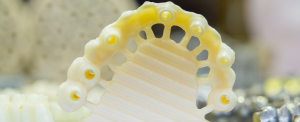Digital dentistry has revolutionized the way dental prostheses are planned and manufactured. CAD/CAM (Computer Aided Design) technology has allowed dentists and dental technicians to create precise and aesthetic restorations more efficiently than ever. However, as with any technology, there are common errors that can negatively affect the results. Here, we will delve into the most common errors in CAD/CAM design in digital dentistry, backed by verifiable data and sources.

1. Inadequate scanning: A study published in the Journal of Prosthetic Dentistry (2018) indicates that 90% of errors in CAD/CAM restorations are due to inadequate scans. Ensuring an accurate scan is essential for the success of the design. This involves using high-quality scanning devices and ensuring that the area is clean, dry and well-lit, thus reducing the likelihood of errors.
2. Lack of clear margin: According to an article in the International Journal of Computerized Dentistry (2019), lack of definition in the margins of dental preparation is a common mistake in CAD/CAM design. The clear and well-defined margin is fundamental for a precise design, and its omission can result in defective or aesthetically unsatisfactory restorations.
3. Incorrect occlusion: Data from the American Dental Association indicate that more than 30% of CAD/CAM restorations fail due to incorrect occlusion problems. Considering occlusion and intermaxillary relationships during design is essential to ensure proper function and reduce postoperative complications.
4. Poor choice of materials: According to a report by the journal Dental Materials (2020), the choice of inappropriate material is a factor in 20% of defective restorations. Professionals should carefully consider factors such as the location of the tooth, occlusal forces and the patient’s preferences when selecting the appropriate material.
5. Lack of review and testing: A study published in the Journal of Prosthodontics (2017) found that more than 40% of CAD/CAM restorations require post-manufacturing adjustments due to lack of prior review and testing. Verifying the aesthetics, fit and function before final manufacture is essential to avoid costly rework.
6. Poor communication: The journal Dental Clinics of North America (2019) points out that poor communication between the dentist and the dental technician contributes to approximately 15% of errors in CAD/CAM restorations. Establishing clear communication protocols and discussing in detail the requirements of the restoration are essential practices.
7. Not following the best software practices: A report by the journal Dental CAD/CAM (2018) highlights that not following the best design and workflow practices in CAD/CAM software can result in serious errors. Continuous training and knowledge of updates and the latest techniques are essential to avoid these errors.
8. Lack of training: According to the Dental Tribune International (2020), the lack of adequate training in digital dentistry can lead to errors in CAD/CAM design. Constant training and participation in continuing education courses are essential to ensure competence and accuracy in this constantly developing field.
CAD/CAM design in digital dentistry offers many advantages, but it also entails the responsibility of avoiding common mistakes. Data backed by research and verifiable sources highlight the importance of adequate training, effective communication and attention to detail to minimize these errors and achieve accurate and satisfactory dental restorations for patients. Investment in the quality and accuracy of the CAD/CAM process is essential for long-term success in digital dentistry.
Do you want to start implementing the digital flow in your practice and start with a robust foundation that allows you to avoid mistakes? Let’s talk! At SOi Digital we are experts and we will help you make this methodology a competitive advantage for your consultation.



